
Machu Picchu Peru information
 Damages of Machu Picchu (Enlarge)
Damages of Machu Picchu (Enlarge)
The damages of Machu Picchu, rediscovered in 1911 by Yale archaeologist Hiram Bingham, tend to be one of the most beautiful and enigmatic ancient internet sites on the planet. Although the Inca men and women certainly utilized the Andean hill top (7972 feet level), erecting many hundreds of stone structures from very early 1400's, legends and fables indicate that Machu Picchu (indicating 'Old Peak' in the Quechua language) had been revered as a sacred place from a far early in the day time. Whatever its beginnings, the Inca switched the website into a tiny (5 square miles) but extraordinary town. Hidden from the following and totally self-contained, surrounded by agricultural terraces sufficient to give the people, and watered by normal springs, Machu Picchu seemingly have already been utilized by the Inca as a secret ceremonial city. Two thousand foot above the rumbling Urubamba lake, the cloud shrouded damages have actually palaces, baths, temples, storage space spaces and some 150 houses, all-in an extraordinary state of preservation. These structures, created from the grey granite associated with the hill top are miracles of both architectural and visual wizard. A number of the building blocks weigh 50 tons or higher yet are precisely sculpted and fitted and such exactitude your mortarless bones will likely not permit the insertion of even a thin knife blade.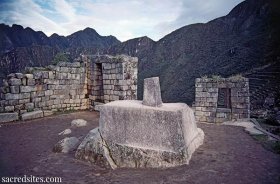 minimal is famous associated with the personal or religious utilization of the site during Inca times. The skeletal continues to be of ten females to one male had led to the casual assumption that site was a sanctuary the instruction of priestesses and /or brides for Inca nobility. But subsequent osteological examination of the bones unveiled an equal few male bones, thereby showing that Machu Picchu was not solely a temple or dwelling place of ladies.
minimal is famous associated with the personal or religious utilization of the site during Inca times. The skeletal continues to be of ten females to one male had led to the casual assumption that site was a sanctuary the instruction of priestesses and /or brides for Inca nobility. But subsequent osteological examination of the bones unveiled an equal few male bones, thereby showing that Machu Picchu was not solely a temple or dwelling place of ladies.
One of Machu Picchu's primary features was compared to astronomical observatory. The Intihuatana stone (indicating 'Hitching Post of Sun') has been shown is an exact signal regarding the date of the two equinoxes along with other significant celestial times. The Intihuatana (also known as the Saywa or Sukhanka stone) is made to hitch the sun's rays at two equinoxes, perhaps not during the solstice (as is reported in some tourist literature and new-age publications). At midday on March 21st and September 21st, the sun appears practically directly above the pillar, producing no shadow anyway.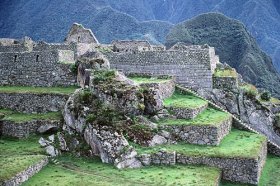 At this accurate moment sunlight "sits along with his may well upon the pillar" and is for a second "tied" towards rock. At these durations, the Incas held ceremonies on rock in which they "tied the sun's rays" to halt its northward movement within the sky. Additionally there is an Intihuatana alignment with the December solstice (the summertime solstice of this south hemisphere), when at sunset the sun sinks behind Pumasillo (the Puma's claw), the essential sacred hill associated with the western Vilcabamba range, nevertheless the shrine is mostly equinoctial.
At this accurate moment sunlight "sits along with his may well upon the pillar" and is for a second "tied" towards rock. At these durations, the Incas held ceremonies on rock in which they "tied the sun's rays" to halt its northward movement within the sky. Additionally there is an Intihuatana alignment with the December solstice (the summertime solstice of this south hemisphere), when at sunset the sun sinks behind Pumasillo (the Puma's claw), the essential sacred hill associated with the western Vilcabamba range, nevertheless the shrine is mostly equinoctial.
The Intihuatana stone, Machu Picchu
Shamanic legends tell whenever a delicate person variations their particular forehead into Intihuatana rock it starts their particular eyesight into character globe. Intihuatana rocks were the supremely sacred things of Inca folks and had been methodically looked for and destroyed by the Spaniards. As soon as the Intihuatana rock had been damaged at an Inca shrine, the Inca thought that the deities of the destination passed away or departed.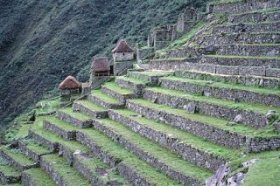 The Spaniards never ever discovered Machu Picchu, although they suspected its existence, thus the Intihuatana rock and its resident spirits stay static in their original place. The mountain top sanctuary fell into disuse and had been abandoned some forty many years following the Spanish took Cuzco in 1533. Offer outlines linking the numerous Inca personal centers had been disrupted additionally the great kingdom came to an end. The photo reveals the damages of Machu Picchu into the foreground with all the sacred peak of Wayna Picchu towering behind. Partway along the northern side of Wayna Picchu is the alleged "Temple associated with Moon" inside a cavern. Much like the ruins of Machu Picchu, there isn't any archaeological or iconographical research to substantiate the "new-age" presumption that cave had been a goddess web site.
The Spaniards never ever discovered Machu Picchu, although they suspected its existence, thus the Intihuatana rock and its resident spirits stay static in their original place. The mountain top sanctuary fell into disuse and had been abandoned some forty many years following the Spanish took Cuzco in 1533. Offer outlines linking the numerous Inca personal centers had been disrupted additionally the great kingdom came to an end. The photo reveals the damages of Machu Picchu into the foreground with all the sacred peak of Wayna Picchu towering behind. Partway along the northern side of Wayna Picchu is the alleged "Temple associated with Moon" inside a cavern. Much like the ruins of Machu Picchu, there isn't any archaeological or iconographical research to substantiate the "new-age" presumption that cave had been a goddess web site.
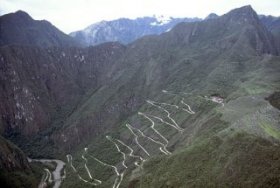 Although Hiram Bingham was initial individual deliver word-of the ruins to the outside globe in 1911, other outsiders had been said to have experienced Machu Picchu before him. Your website may have been found in 1867 by a German businessman, Augusto Berns, and there's some evidence that another German, J. M. von Hassel, appeared even earlier. Maps discovered by historians show sources to Machu Picchu as early as 1874. In 1904, an engineer known as Franklin supposedly spotted the ruins from a distant hill.
Although Hiram Bingham was initial individual deliver word-of the ruins to the outside globe in 1911, other outsiders had been said to have experienced Machu Picchu before him. Your website may have been found in 1867 by a German businessman, Augusto Berns, and there's some evidence that another German, J. M. von Hassel, appeared even earlier. Maps discovered by historians show sources to Machu Picchu as early as 1874. In 1904, an engineer known as Franklin supposedly spotted the ruins from a distant hill.
Ruins of Machu Picchu, Peru
RELATED VIDEO

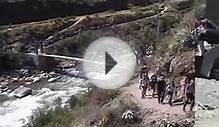
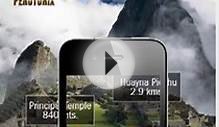
Share this Post
Related posts
Peru Machu Picchu Trek
By Mark Adams, writer of Turn Appropriate at Machu Picchu There’s nothing beats the satisfaction of nearing Machu Picchu…
Read MoreMachu Picchu Peru pictures
Enduring mysteries in a sacred landscape Machu Picchu is a mysterious destination built because of the Incas in an astounding…
Read More

